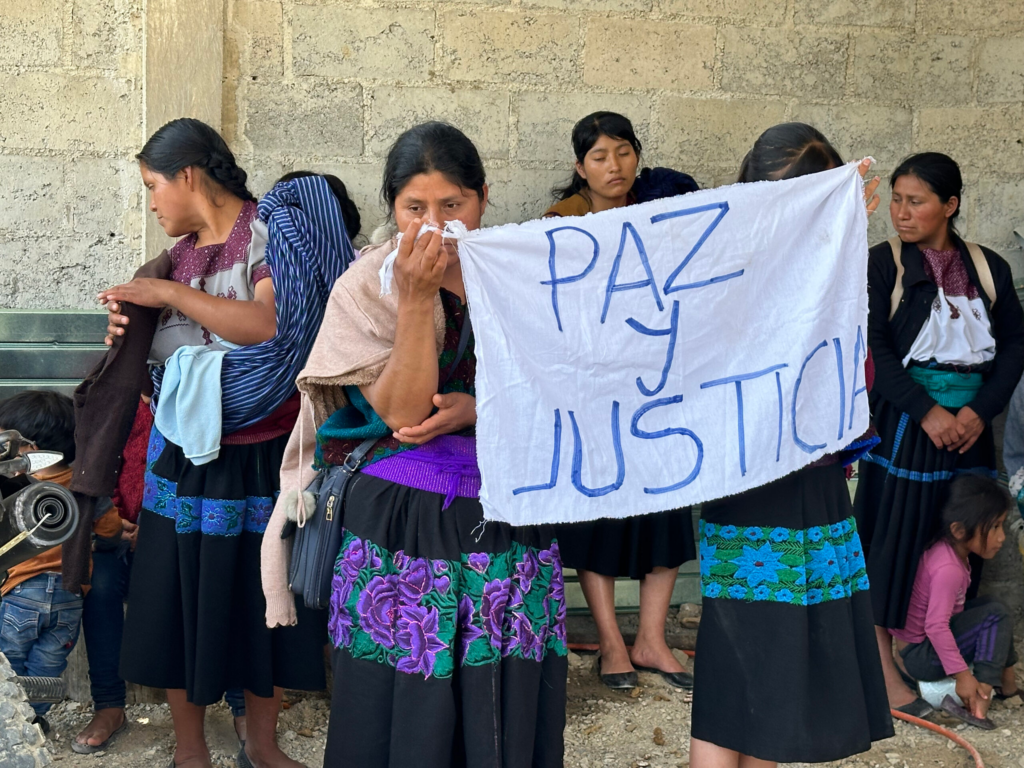
Stress and depression have accompanied them since they were expelled from the community of Santa Martha, Chenalhó on June 24th, 2022. One of them, “due to sadness,” has lost her hair considerably, something unusual because baldness is not common among the Tsotsil population of the Chiapas Highlands, and even less so in women. She, and another hundred women now displaced, sleep little, eat irregularly and, sometimes, spend the night hiding in the mountains.
The bullet casings that have the inscriptions “308 WIN” and “7.62 x 39” at their base are still found on the floor of a plot of land near the house they have rented since their expulsion. The weapons that fire this type of bullet are assault rifles with telescopic sights and AK-47s.
Those on the floor are the shell casings of the weapons that were used against them on February 21st, when a group of armed men had a shootout towards the place where they took refuge, from nine in the morning until two in the afternoon of that day.
The families expelled from Santa Martha have a history of violence prior to these events. Since 2018, incited by the local authorities, the men fought over 60 hectares of land from their neighbors in Aldama using weapons, a dispute that lasted about four years and left dozens dead and injured in the neighboring municipality.
After they won the land – the state government granted them half of it legally – in Santa Martha they did not agree on the fate of the land and within the community they disputed it.
The result of these differences was the disappearance and possible murder of five residents – Juan Ruíz Ruíz, Magdalena Velasco Pérez, José Miguel Ruíz Velasco, Davis Ruíz Velasco and Amalia Ruíz Velasco, the latter aged 16 and 12 – and the expulsion of some 270 people who are now in a situation of forced displacement.
When they left, in the early morning of a rainy June 24, they took refuge in the Polhó community, a place that has its own history that led to the Acteal massacre.
In the first days after her expulsion, Micaela, a woman of about 40 years old, mother of four children, said that in Santa Martha she had a large store where she sold groceries, treats and other supplies; those days she was still wearing clothes in good condition, earrings and almost new shoes.
She now lives overcrowded in a house – a large room with cement block walls – that seven families rent. They divided the interior with black plastic and some blankets, to have some privacy to sleep. Dozens of small boys and girls play and trip in that insufficient place where at midday the heat is suffocating.
Since their expulsion they have sought to return, they have asked for the intervention of the state government, they have camped outside the government buildings in the capital of Chiapas to be heard, and even the place where they are now taking refuge they have suffered armed attack on two occasions.
The response of the Chiapas and federal governments has been the promise of intervention, but not even the Mexican Army has been able to permanently enter Santa Martha. For seven months after their expulsion they paid the rent for the house they now occupy, until last November they were provided with some food. They were also promised a mobile school for the boys and girls.
But currently they do not have the money to pay the rent, nor supplies to feed themselves, while their sons and daughters wander all day in the small place without receiving any educational services; also, after the attack on February 21st, they sleep intermittently among the mountains, for fear of new aggression.
From the place where they now take refuge, in Polhó, you can see in the distance the sandbank of the Majomut community whose dispute between two groups, according to the version given at the time by the federal government, was one of the origins of the Acteal Massacre of December 1997.
This version was denied by the survivors, who over the years demonstrated that the underlying problem was the formation of a paramilitary group trained by the security forces of the Mexican government to minimize the presence in the area of the Zapatista Army of National Liberation (EZLN).
27 years after these events, while the number of people displaced by violence increases, in the area there are no longer only the perpetrators of the massacre and their families, but also self-defense groups such as El Machete de Pantelhó, local armed groups that traffic drugs. and, recently, young people hired by national drug cartels, according to the videos they themselves recorded showing off cars, weapons and weekly payments that “the old guys” give them.
“We want justice, we want to return (…) here we are suffering from armed criminal groups, here they come close to where we are living. We left to look for our refuge because we are very afraid (…) we demand our return from the government,” explained – with the help of a translator – one of the Tsotsil women.
Original text and photo by Ángeles Máriscal at Chiapas Paralelo on March 5th, 2024.
Translated by Schools for Chiapas.
